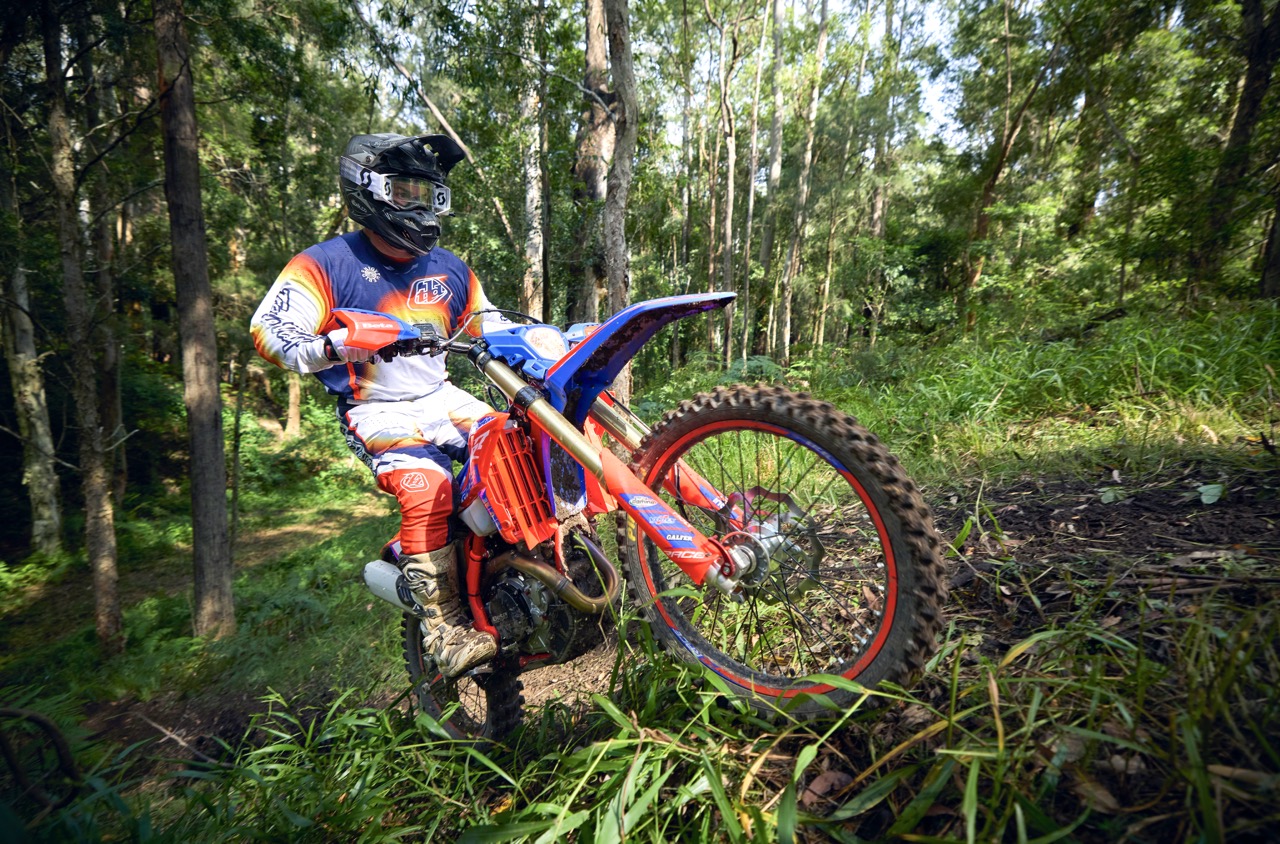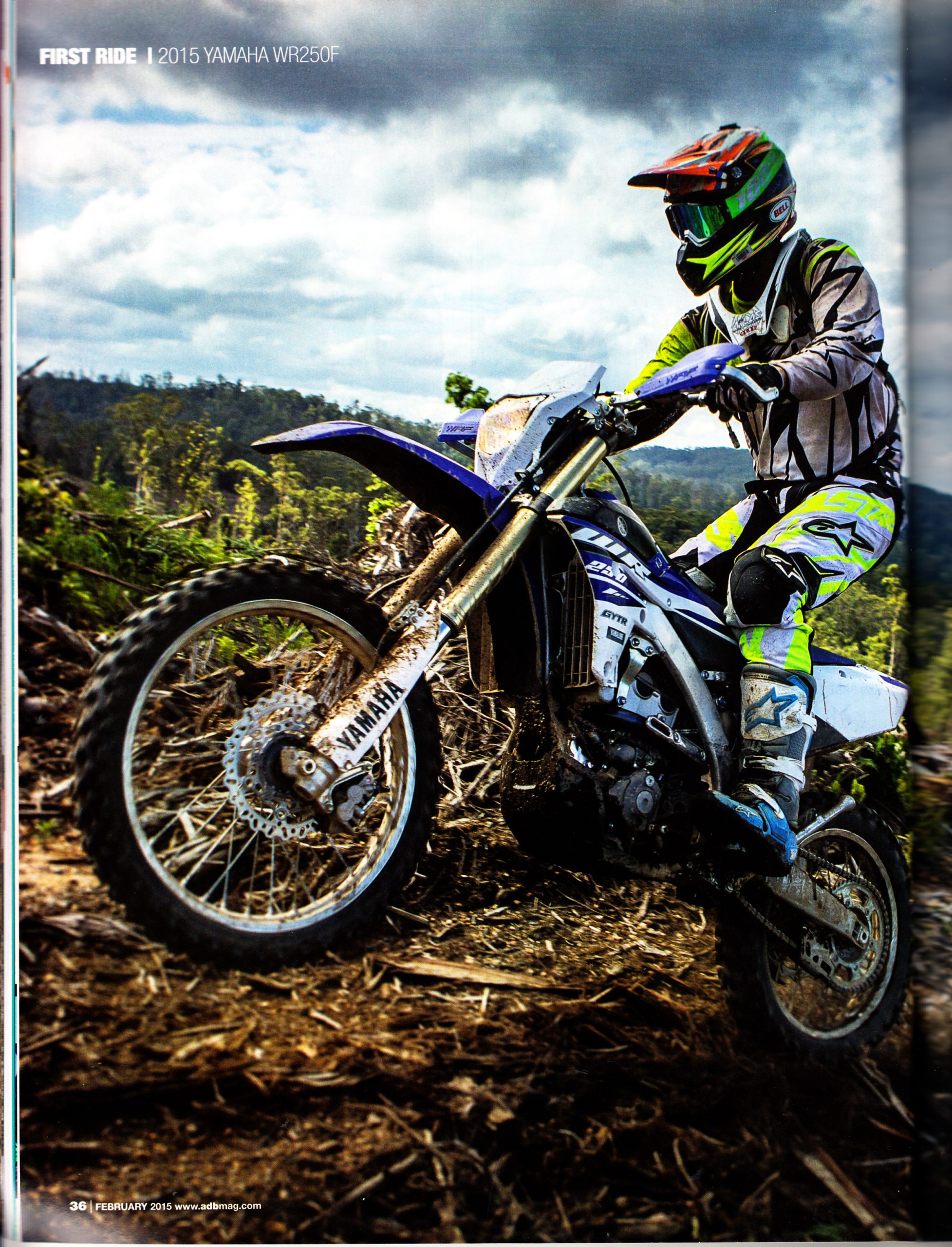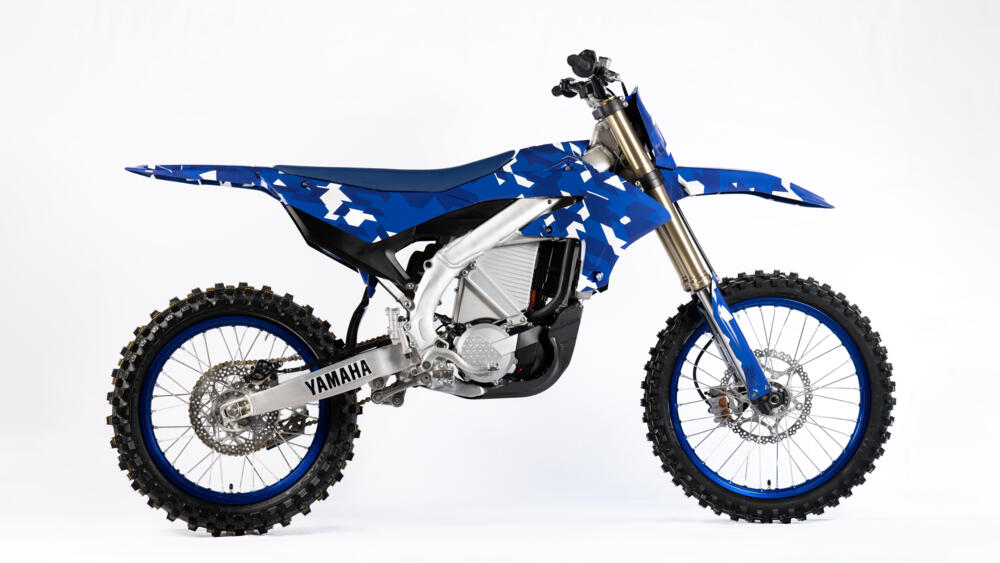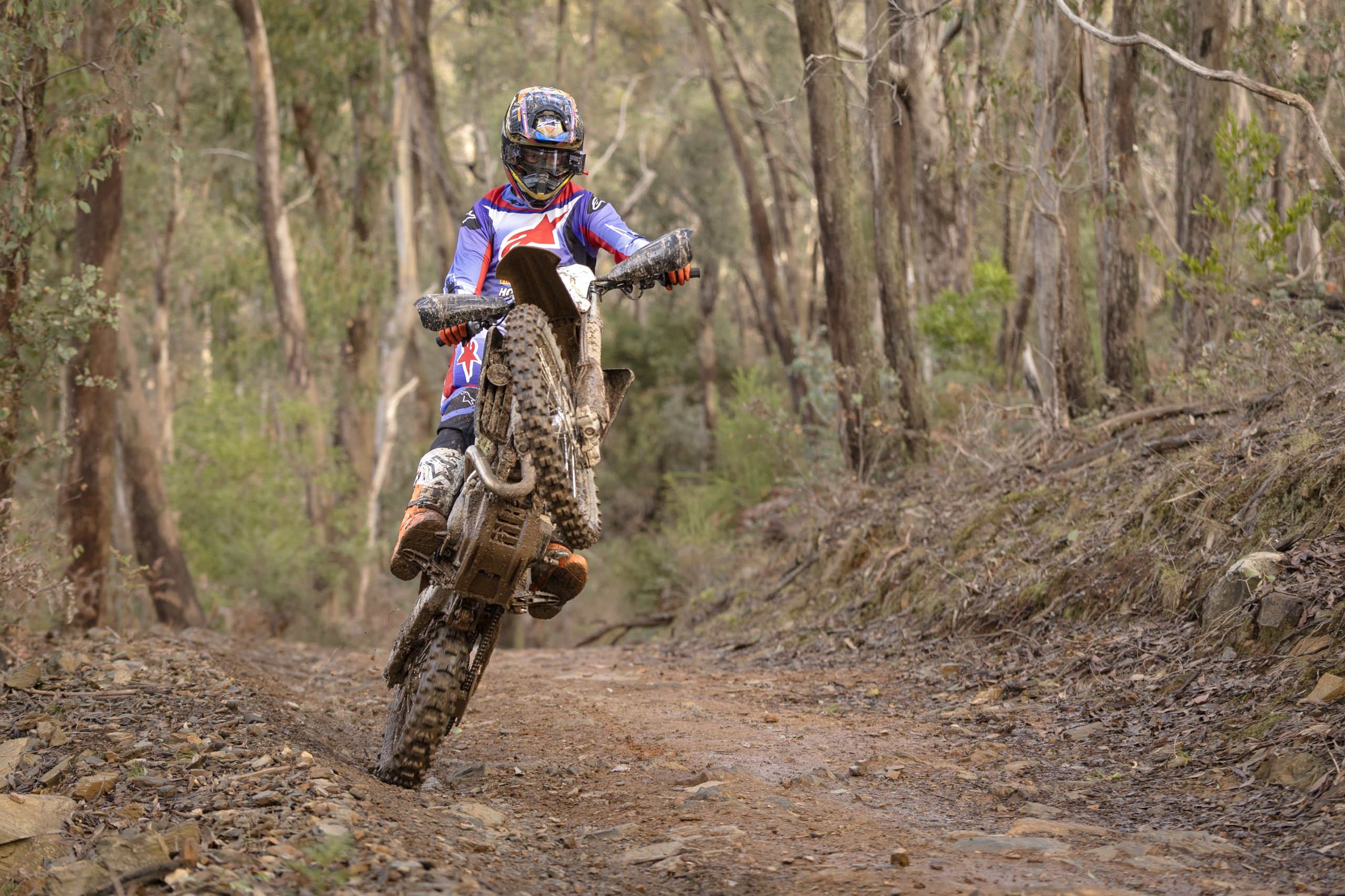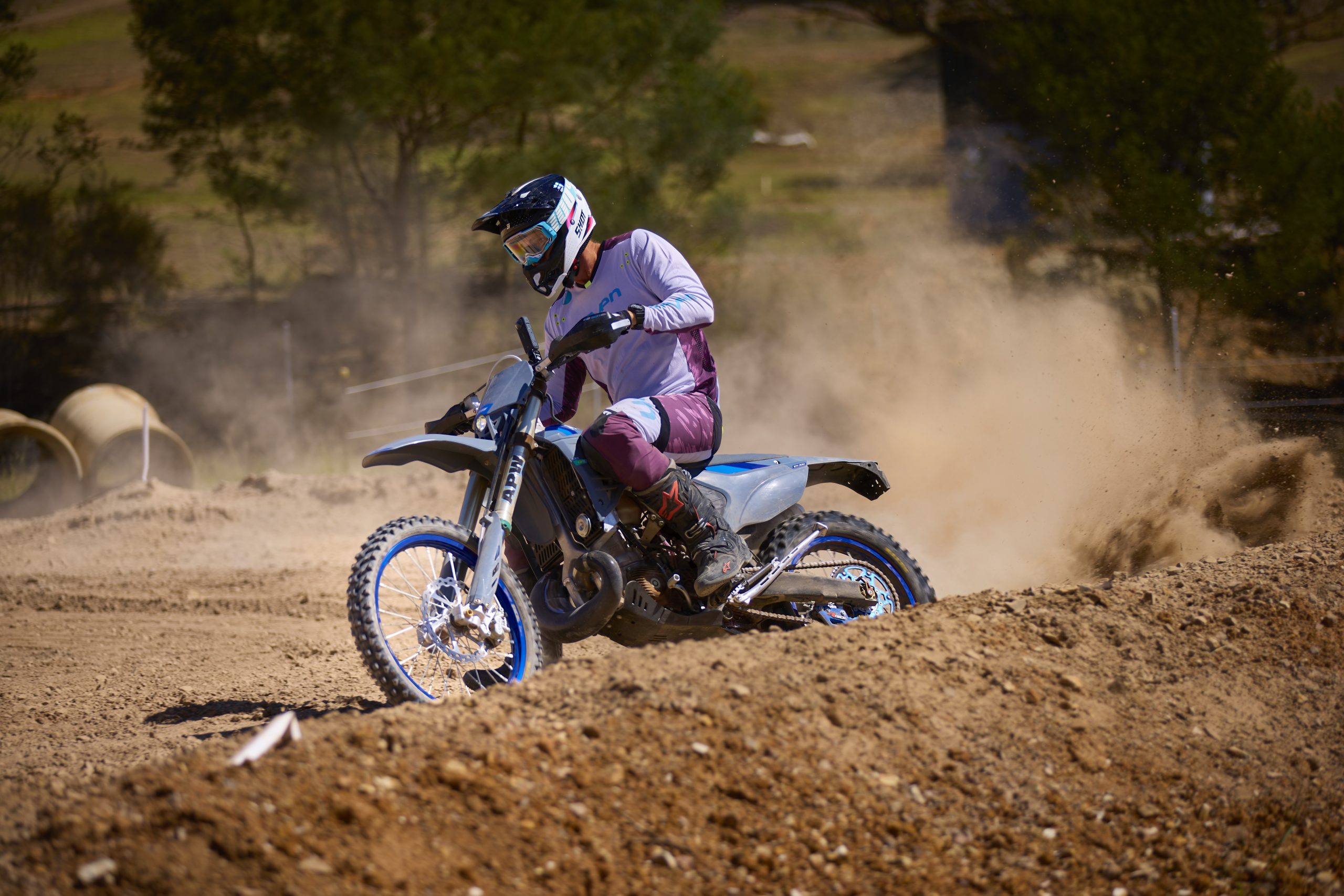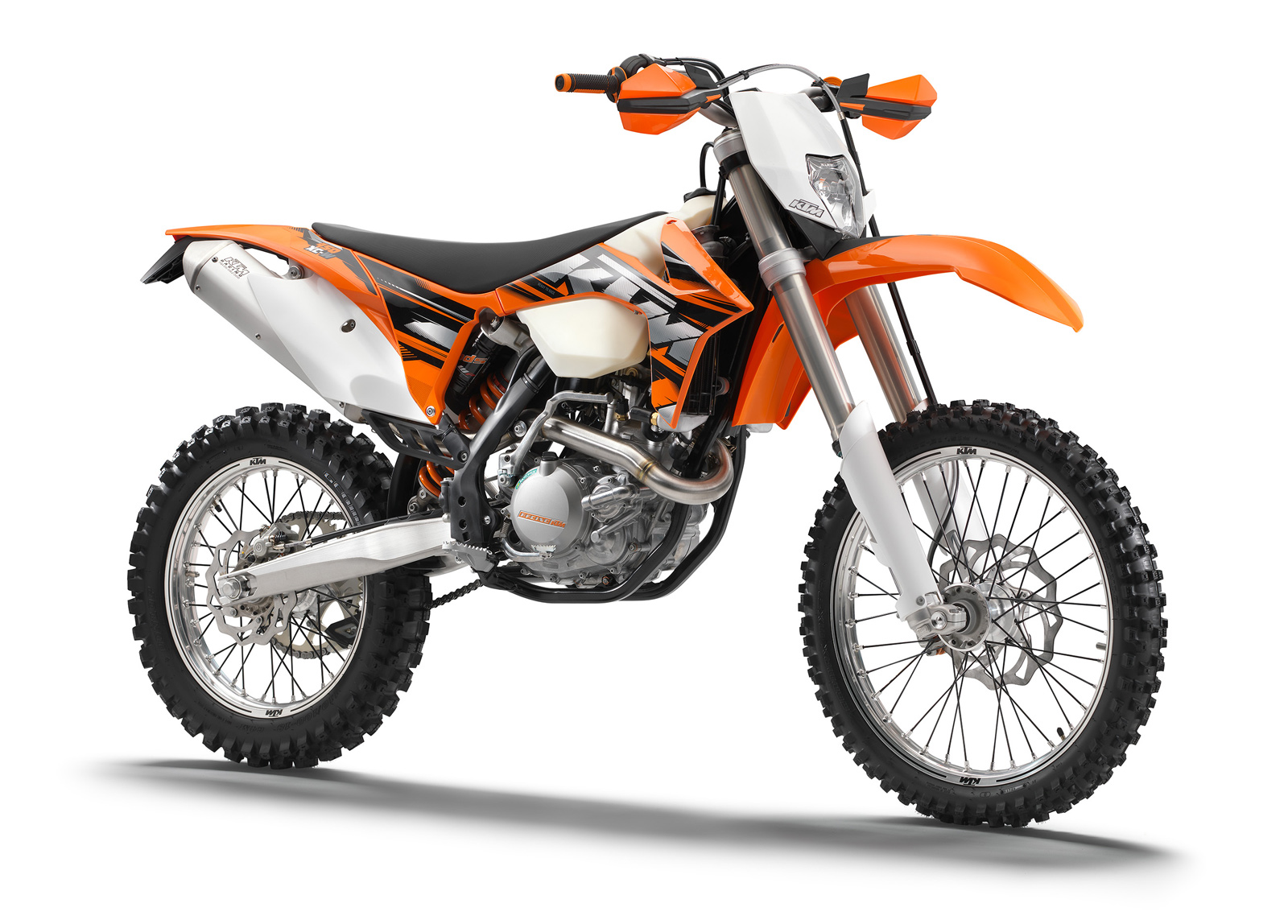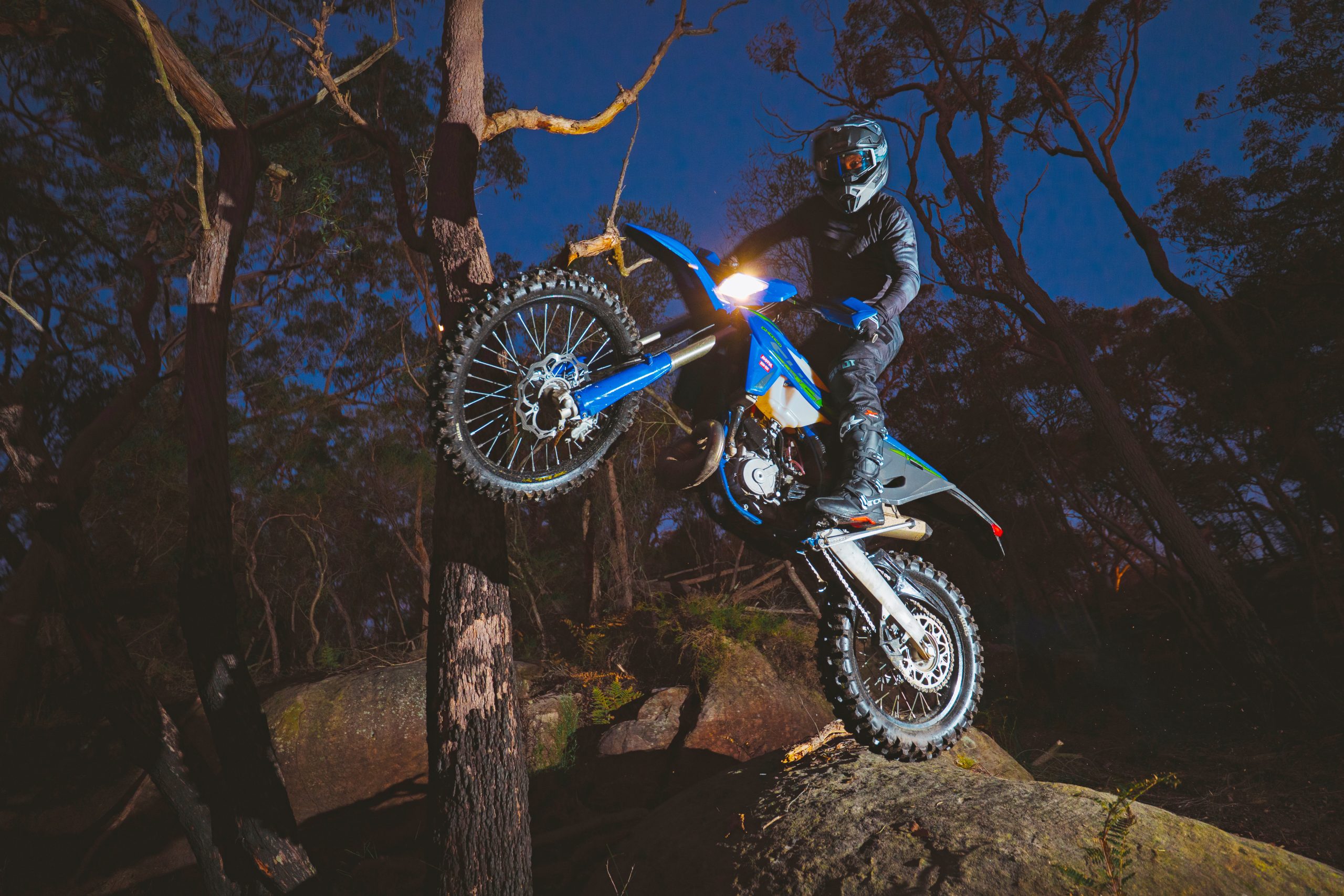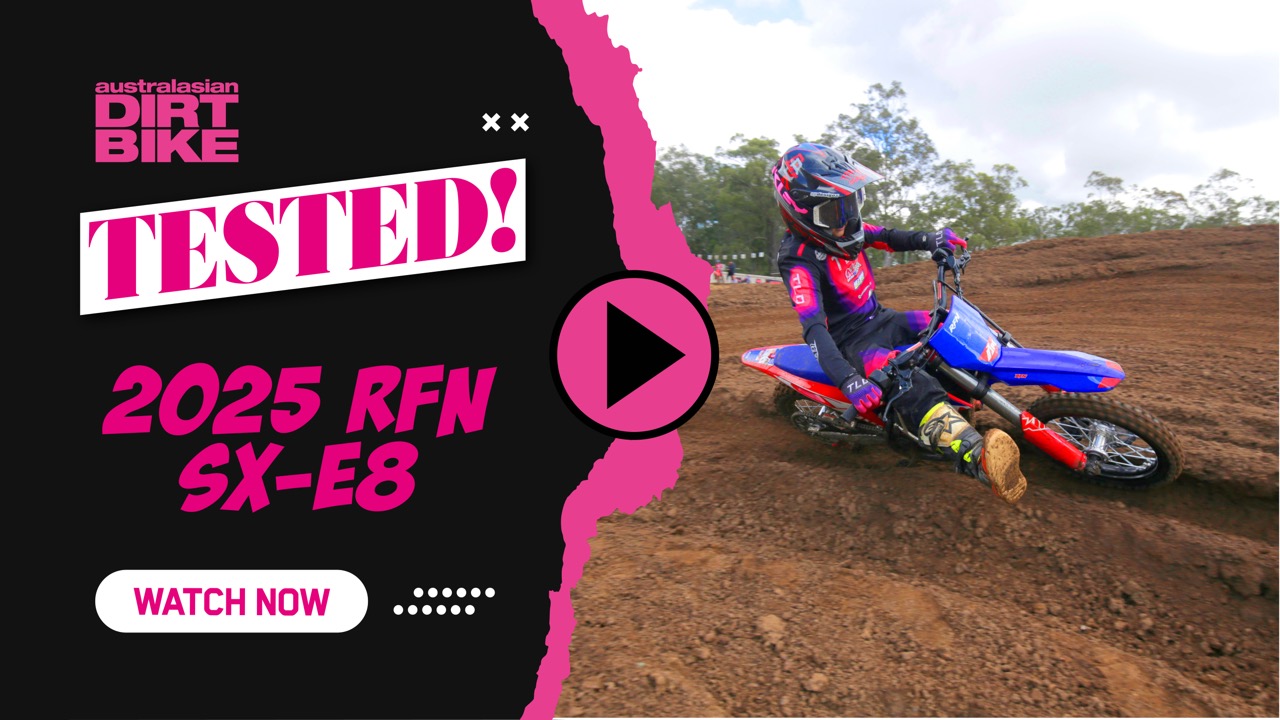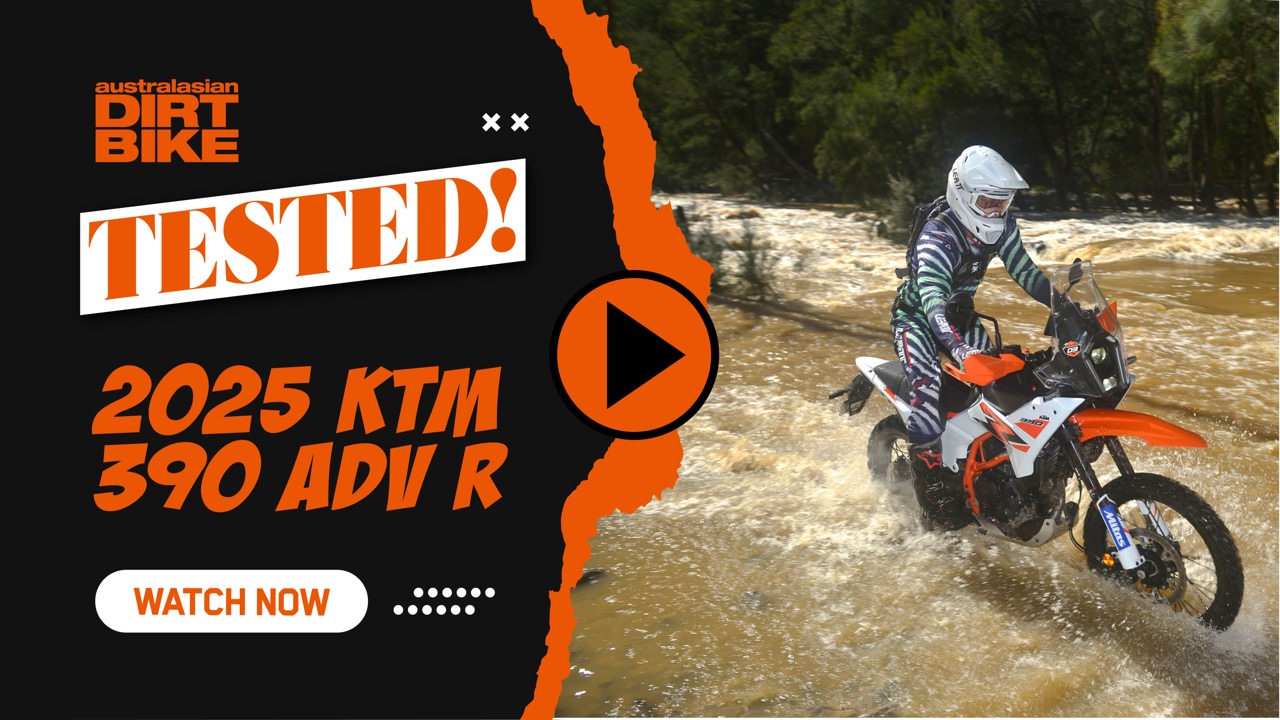When it comes to getting your kid started on a dirt bike, the eternal debate in 2025 between petrol-powered and electric machines rages on. Parents often find themselves torn between the raw power and authenticity of petrol engines and the convenience, low-maintenance appeal of electric motors. Each side has its merits, depending on what you’re looking for and YCF makes that choice even harder thanks to the YCF 50A and YCF W50.
For parents, electric bikes are a dream come true in terms of ease of use. No petrol, no oil changes, and no worrying about the sound of an engine stalling mid-ride. Electric bikes tend to be quieter and are generally seen as a safer option for beginners, offering smooth, predictable power that reduces the chance of things going sideways. The downside? They can sometimes feel a little less “authentic,” with some riders missing the rev and vibration of a petrol engine.

On the other hand, petrol-powered bikes—though requiring more upkeep—deliver that classic, visceral thrill that makes dirtbike riding a passion. They also pack more grunt in kids bikes, which is great for riders who are outgrowing their starter bikes and want something that can keep up with their need for speed.
YCF has managed to carve out a niche in the kids’ dirt bike market by offering both petrol and electric models. Whether you’re looking for the classic rumble of a petrol engine with the YCF 50A, or the quiet hum of an electric motor with the YCF W50, they’ve got options to suit. YCF is a French brand made in China and they’ve been making waves with their kid-friendly models that balance ease of use with genuine off-road capability. But which bike is right for your young rider?

A Side-by-Side Comparison
Chassis and Design
Both the YCF 50A and YCF W50 come with a high-tensile tubular steel cradle frame, making them both durable and light enough for young riders to handle. The design is almost identical between the two models, with both bikes sharing the same wheelbase of 870 mm, a max height of 790 mm (at the handlebar), and a seat height of 550 mm. Both bikes also feature 250 mm of ground clearance, making them ideal for tackling typical beginner obstacles like bumps and small rocks.

Weight
One noticeable difference is the weight. The petrol-powered YCF 50A weighs in at 42 kg, while the electric YCF W50 is a slightly lighter 36 kg. This difference in weight can be attributed to the heavier components of the petrol engine and fuel system in the 50A. For younger riders, that 6 kg difference can make a significant impact, especially if they find themselves picking up their bike after a tip-over.

Suspension and Brakes
Both bikes come equipped with USD (upside-down) forks and 200 mm of rear monoshock suspension. The brake setup is nearly identical on both bikes as well, with hydraulic single-disc brakes measuring 160 mm on both the front and rear. This means both bikes offer decent stopping power for young riders, though the brake feel might differ slightly depending on whether you’re riding an electric or petrol bike.

Powertrain and Performance
Here’s where the key differences lie. The YCF 50A runs a 49.9cc, air-cooled, four-stroke engine that delivers smooth power through an automatic clutch and single gear transmission. This makes it easy for kids to focus on riding rather than shifting gears. On the other hand, the YCF W50 is powered by a 1200W electric motor, which is great for parents looking for a quieter, cleaner option. The electric motor has a lithium battery (15Ah, 48V) that delivers a run time of about 90 minutes on a single charge, though it requires a fast charger to get back up to full capacity. While both bikes share many similarities in design, including their frames, suspension, and braking systems, they differ significantly in terms of powertrains and weight.

Jax’s Take
When it comes to testing kids dirtbikes, we enlisted our tried and true kids tester, 5-year-old Jax, who stands at 125cm tall and has been getting some serious seat time on both the YCF 50A and the YCF W50 (Jax happens to be the editor’s son… funny that!)
Fit and Comfort
First things first, both bikes fit Jax just fine. He’s tall enough that he could easily touch the ground with both feet, which is crucial when he’s still learning the ropes. After a few crashes Jax had no issues picking up either bike on his own. This is a testament to the balance and design of both the YCF 50A and the W50, which both have very similar handling characteristics. The lightweight frames (42kg for the petrol-powered 50A and 36kg for the electric W50) make them manageable for younger riders, with Jax finding them comfortable to ride for longer periods without feeling like he was losing control all the time. The seat was also a big win for Jax, who found it comfortable enough for extended rides without complaining about sore arse.

Suspension and Handling
One of the biggest things Jax noticed—and we definitely noticed too—was how impressively compliant the suspension was on both bikes. Whether he was riding over bumps, small jumps, or uneven terrain, neither the YCF 50A nor the YCF W50 gave him any cause for concern. The suspension on both bikes is surprisingly well-tuned for young riders, with the fork and monoshock absorbing the bumps smoothly. Jax never once got bucked off the back of the bike or experienced any headshake from the fork, which can be a real issue for some kids on some beginner bikes. Whether he was riding the YCF 50A on the farm or the W50 in local parks around Sydney, the bikes held their own, giving Jax a stable, predictable ride that was perfect for his skill level.

Braking Performance
When it comes to stopping power, Jax gave both bikes a thumbs up. Jax found them excellent for bringing him to a quick, controlled stop. The brakes were easy to use, and with them being on the handlebars, Jax said it felt more intuitive for him. Having the brakes where he could easily access them made him feel more in control, especially when navigating tighter turns or when he needed to slow down on a steep trail.
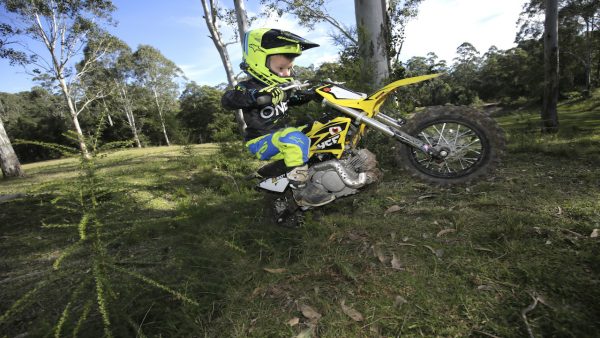
Power Delivery and Ride Experience
Here’s where things get interesting. Jax is a fan of the sound and feel of a petrol engine—there’s just something about the roar of the motor that makes him feel more like a “real” rider. He spent a fair bit of time on both bikes, but it was the YCF 50A, the petrol-powered bike, that he gravitated toward when it was time to head out to the farm for a proper ride.
Jax loved the sound of the engine as it roared to life and gave him that “old-school” experience. He liked the fact that the 50A has no gears, so there was no complicated shifting involved. It runs on a simple automatic clutch, which made it easy for Jax to focus on riding instead of worrying about gears, though he did point out that the power delivery was a bit slower to spool up compared to the instant torque from the electric motor of the W50.

This lack of instant torque from the petrol engine meant that hill climbs with shorter run-ups were a little trickier for Jax on the YCF 50A. He had to get the bike revving before it could really power up the incline, whereas with the electric W50, the power was immediate and constant, making it easier for Jax to tackle hills.
That being said, the YCF 50A more than made up for this with its insane fuel economy. The petrol bike’s 2-litre fuel tank lasted for what felt like forever, with Jax being able to ride for hours without worrying about running out of fuel. Compare that to the YCF W50, which, despite having solid battery life for an electric bike, didn’t last as long as a full tank of fuel in the 50A. Jax did enjoy how the electric bike’s battery life exceeded that of many other 50cc electric bikes he’s tried, but in the end, there was no denying that the petrol bike was king when it came to riding duration.

Convenience and Features
Another factor that Jax mentioned was how much he liked the electric start on the YCF 50A. He found it super easy to fire up the engine with the push of a button—no kicking required, which is always a win for a young rider. On the other hand, the YCF W50 didn’t need a starter motor, but it did feature a basic display that showed how much power was left in the battery, which Jax found cool but didn’t really pay much attention to while riding.

Where They Ride
On our farm, Jax exclusively rides the YCF 50A. The petrol bike’s incredible fuel economy and longer ride time make it the perfect fit for farm terrain, where he’s always riding through longer stretches and hitting bigger obstacles. But when we’re in Sydney, it’s the YCF W50 that Jax loves taking out for a spin. The quiet, smooth electric motor is perfect for smaller, quieter green spaces, where noise might be a concern, and the low maintenance of the W50 makes it ideal for short trips to the park. While he enjoys both bikes, each one has its place depending on where we are and what the riding conditions are like.

Final Thoughts
So, which bike does Jax prefer? Well, he’s a bit of a petrol-head at heart, so the YCF 50A has his vote for pure fun. That motor sound and the challenge of the climb are part of what makes dirt bike riding exciting for him. But the YCF W50, with its instant torque and easy, quiet operation, is still a solid choice—especially for urban rides or younger riders who prefer the simplicity of an electric motor.
Both bikes deliver on their promise. The YCF 50A shines with incredible fuel efficiency, simple operation, and a more “traditional” riding experience, making it the ideal choice for longer, more rugged rides. Meanwhile, the YCF W50 offers convenience, quiet operation, and instant power, perfect for smaller spaces and less maintenance. Whether you’re in the bush or the city, you really can’t go wrong with either.

| Specification | YCF 50A (Petrol) | YCF W50 (Electric) |
| Frame | High Tensile Tubular Steel, Cradle | High Tensile Tubular Steel, Cradle |
| Wheelbase | 870 mm | 870 mm |
| Max Length | 1280 mm | 1240 mm |
| Max Width | 560 mm | 560 mm |
| Max Height | 790 mm (handlebar) | 790 mm (handlebar) |
| Seat Height | 550 mm | 550 mm |
| Ground Clearance | 250 mm | 250 mm |
| Weight (Wet) | 42 kg | 36 kg |
| Fuel/Battery Capacity | 2 L (Petrol) | 15Ah, 48V Lithium Battery |
| Front Suspension | 530 mm USD Front Forks | 530 mm USD Front Forks |
| Rear Suspension | 200 mm Monoshock Absorber | 200 mm Monoshock Absorber |
| Front Brake | Hydraulic / Single Disc ø160 mm, Single-Piston Calliper | Hydraulic / Single Disc ø160 mm, Single-Piston Calliper |
| Rear Brake | Hydraulic / Single Disc ø160 mm, Single-Piston Calliper | Hydraulic / Single Disc ø160 mm, Single-Piston Calliper |
| Front Rim | 1.4×10″ | 1.4×10″ |
| Front Tyre | 250/10″ Knobby | 250/10″ Knobby |
| Rear Rim | 1.4×10″ | 1.4×10″ |
| Rear Tyre | 250/10″ Knobby | 250/10″ Knobby |
| Engine Type | Single Cylinder, 4-Stroke, Air Cooled | 1200W Electric Motor |
| Displacement | 49.9 cc | N/A |
| Compression Ratio | 8.5:1 | N/A |
| Starter | Electric | Electric |
| Carburettor | 14 mm | N/A |
| Transmission | Automatic Clutch, Single Gear | N/A (Electric Motor with Variable Power) |
| Run Time | N/A | 1 Hour 30 Minutes (Approx.) |
| Charging Method | N/A | Fast Charger |
| Potentiometer | N/A | Yes |
